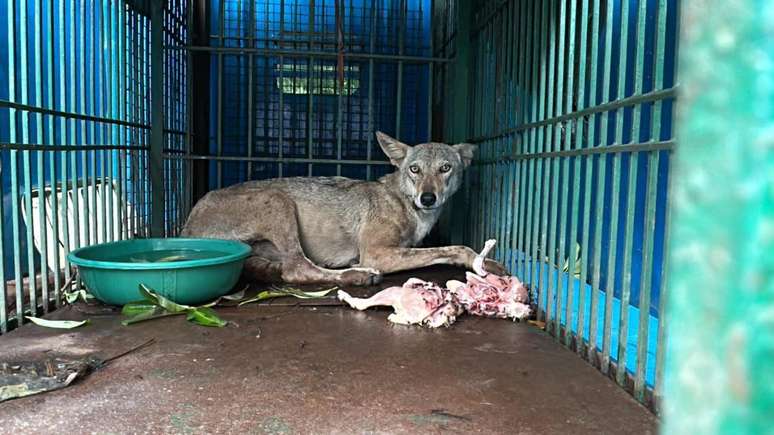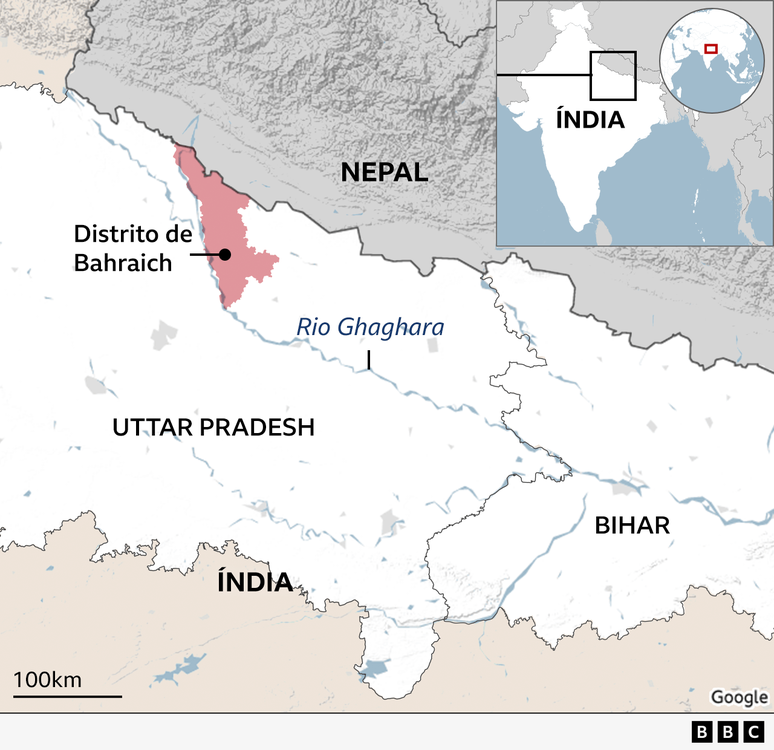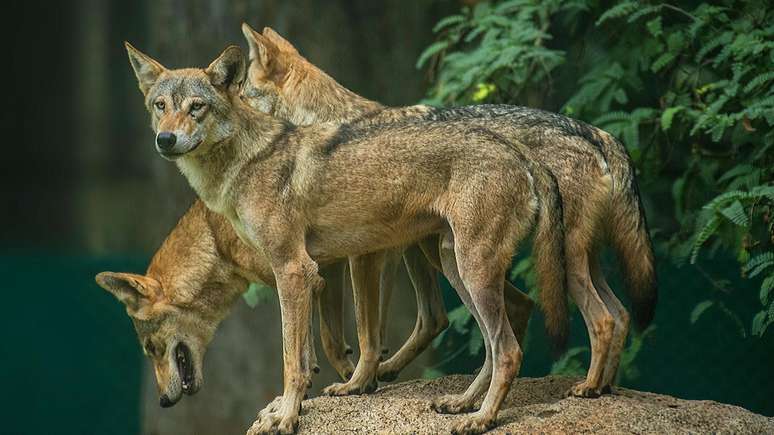Since April, wolf attacks have terrorized villages near the border with Nepal, killing nine children.
Sandhya, a four-year-old girl, was sleeping outside her mud house in the Indian state of Uttar Pradesh on the night of August 17 when a power outage plunged the village into darkness.
“The wolves attacked two minutes after the lights went out. By the time we realized what was happening, they had already taken her away,” recalls her mother Sunita.
Sandhya’s body was found the next day in the sugarcane plantations, about 500 metres from her house.
Earlier this month, in a nearby village, eight-year-old Utkarsh was sleeping under a mosquito net when his mother noticed a wolf crawling into their hut.
“The animal appeared from the shadows. I shouted, ‘Leave my son alone!’ My neighbors ran over and the wolf ran away,” she says.
Since mid-April, a wave of wolf attacks has terrorized about 30 villages in Bahraich district, near the border with Nepal. Nine children and one adult were caught and killed by wolves. The youngest victim was a one-year-old boy; the oldest is a 45-year-old woman. At least 34 were injured.
Panic and hysteria gripped the affected villages.
With many homes without locks, children are kept indoors. At night, men patrol the dimly lit streets. Authorities use drones, cameras, traps and fireworks to scare away wolves. So far, three wolves have been captured and transferred to zoos.
Such attacks on humans are extremely rare and most often involve wolves infected with rabies, a viral disease that affects the central nervous system. A rabid wolf typically carries out several attacks without eating its victims.
A report by the Norwegian Institute for Nature Research found 489 “relatively reliable cases” of wolf attacks in 21 countries – including India – between 2002 and 2020. Only 26 of them were fatal. Around 380 people were victims of rabid wolf attacks.
There have been only two confirmed cases of wolf-related deaths in North America in the past 50 years, Dave Mech, a renowned American biologist specializing in wolf behavior, told the BBC. That’s despite a population of about 70,000 wolves spread across North America.
So why do wolves attack people in Bahraich?
Nestled between a river and forests, Bahraich has long been a traditional habitat for wolves. The district, home to 3.5 million people, is subject to seasonal flooding from the Ghaghara River.

Heavy rains and floods during the monsoons have drastically altered the landscape. The flooded river has affected the forests, potentially driving away wolves in search of food and water. Indian wolves hunt black deer, chinkara (Indian gazelles) and hares.
“Climate change is a gradual process, but floods can lead to disturbances in wolf habitat, forcing them to flee to human settlements in search of food,” says Amita Kanaujia of the Institute of Wildlife Sciences at Lucknow University.
Why should children be targeted by wolves for food?

During an investigation into the killing of large numbers of children in wolf attacks in villages in Uttar Pradesh in 1996, wildlife experts found that supervision of children was minimal because most of the victims came from poor families with a single adult caretaker, usually mothers.
In these poor Indian villages, livestock are often more protected than children. When a hungry wolf lives in a habitat without prey and with limited access to livestock, vulnerable children become more likely targets.
“Nowhere else in the world have we seen epidemics of wolf attacks on children,” said Yadvendradev Jhala, a leading Indian scientist and conservationist.
The current wolf attacks in Uttar Pradesh are perhaps the fourth such wave in four decades.
In 1981-82, wolf attacks in Bihar resulted in the deaths of at least 13 children.
Between 1993 and 1995, another 80 children were attacked, this time by what were believed to be five wolf packs in Hazaribagh district.
The deadliest incident occurred over eight months in 1996, when at least 76 children from more than 50 villages in Uttar Pradesh were attacked, resulting in 38 deaths. The killings stopped after authorities killed 11 wolves. The press described them as “man-eating” wolves.
Jhala and his colleague Dinesh Kumar Sharma conducted a meticulous investigation into the 1996 killings, examining human remains, wolf fur, village huts, population density, livestock and autopsy reports.
The current attacks in Uttar Pradesh bear an uncanny resemblance to discoveries made nearly 30 years ago.
In both cases, the children were killed and partially consumed, with bite marks on their throats and puncture wounds on various parts of their bodies.
Most of the attacks occurred at night, when children sleeping in the open in the heart of villages were taken away. Victims were often discovered in open areas such as farms or meadows.
Like today in Bahraich, the 1996 wolf attacks occurred in villages near riverbanks, surrounded by rice and sugarcane farms and swampy forests. Both incidents involved crowded villages and large numbers of vulnerable children from poor farming families, which increased the risk.
It is unclear whether the attacks came from a lone wolf or a pack.
Based on his 30 years of studying wolves, Jhala believes that a single wolf—as in 1996—is likely responsible for the recent deaths. Villagers have reported seeing a group of five or six wolves in their fields during the day, while the mother of eight-year-old Utkarsh, a survivor, saw a single wolf enter her home and attack her son.
For centuries, humans and wolves in India have coexisted peacefully, thanks to the traditional tolerance of pastoral communities, wildlife experts say. This long-standing coexistence has allowed wolves to persist despite frequent conflicts, particularly over livestock. However, times have changed, and a recent increase in attacks has raised new concerns.
Wildlife experts like Jhala advise that children in affected villages stay indoors, sleep among adults if accommodation is inadequate, and be accompanied by an adult to the bathroom at night.
Residents should avoid letting children roam unsupervised in areas where wolves might hide and appoint night watchmen to patrol the streets.
“Until we determine the exact reasons behind these attacks, these precautions will be crucial to ensure people’s safety,” Jhala says.
Meanwhile, people in Bahraich remain nervous every night.
Source: Terra
Rose James is a Gossipify movie and series reviewer known for her in-depth analysis and unique perspective on the latest releases. With a background in film studies, she provides engaging and informative reviews, and keeps readers up to date with industry trends and emerging talents.







